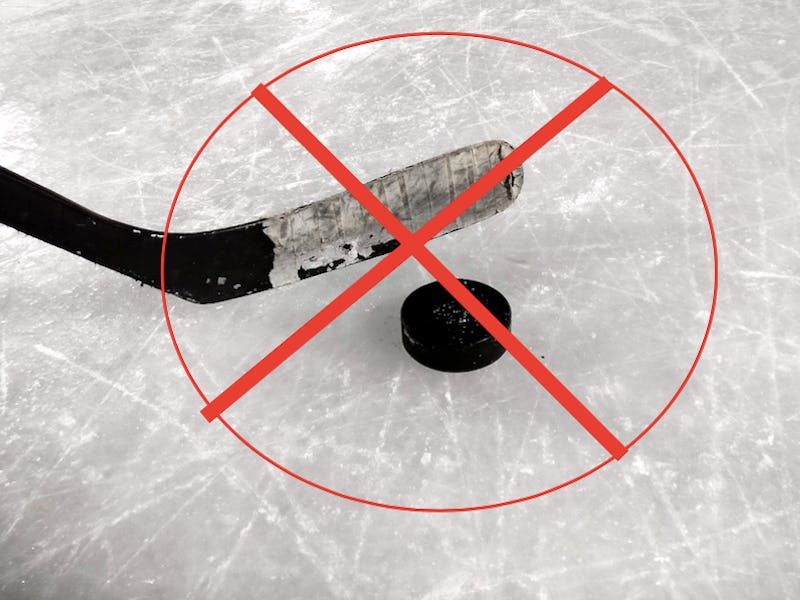There are certain skills that make for an excellent hockey player: Puck control, pass precision, and slick skating moves help, as does, presumably, the ability to withstand hours on the ice. But one collegiate athlete is excelling in the sport despite one very important setback: Chris Truehl is allergic to the cold.
The condition is rare, but luckily for Truehl, doctors have documented it in the past. The successful Quinnipiac University player recently explained his condition and how it affects him in a university profile. Truehl has a condition called cold urticaria, which makes him highly sensitive to cold temperatures. People with this allergy typically break out into itchy hives when they come into contact with the cold, but the severity of the symptoms vary — for some, too much exposure to cold, like swimming in a chilly pool, could lead to low blood pressure, fainting, or death.
Truehl, who says his family has no history of cold urticaria, says he first noticed his condition after taking a post-hockey ice bath in 2013. His lower body erupted into red welts, and subsequent medical tests revealed his allergy. Truehl believes he developed cold urticaria after developing frostbite that covered 40 percent of his skin after a U.S. Air Force training survival exercise went wrong. At the time, his physician told him he “might experience certain side effects” but the allergy proved horrible enough to disqualify him from his medical career, when led him to enroll at Quinnipiac.
A case of cold urticaria.
While Truehl believes his condition came as a repercussion of frostbite, doctors don’t have a solid idea of what causes it. According to the National Organization for Rare Disorders, cold urticaria can occur for unknown reasons or it can be “transmitted as an autosomal trait.” In 2012, researchers from the National Institutes of Health suggested that the allergy could be rooted in a genetic condition they called PLAID (short for PLCG2-associated Antibody Deficiency and Immune Dysregulation). In an examination of three families that all suffered from the allergy, they found that a “small, small, small piece of DNA was missing,” which resulted in the gene PLCG2 to be constantly active, leading to an antibody deficiency that manifested as hives.
Whether or not the condition, which can be treated with antihistamines, is hereditary or has an unidentified cause is apparent in how it affects the body: People who have familial cold urticaria who are exposed to cold typically take 24 to 48 hours to show their symptoms. People who have the “acquired form,” however, erupt into hives within two to five minutes after exposure. It’s estimated that one percent of Americans are affected by this cold allergy as a whole, but there could be more — many people appear to mistake their condition as a result of a food allergy.
As for Truehl, he says that he’s determined that his condition won’t hold him back from eventually going pro. He says that pressure doesn’t get to him — he’s determined to give 100 percent to the game every time. But he also knows how twisted it is that a hockey player is allergic to ice.
“I know,” he jokes in the profile, “There is absolutely no shortage of irony there.”
